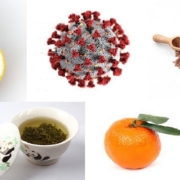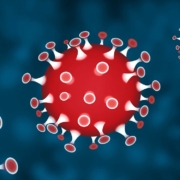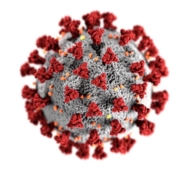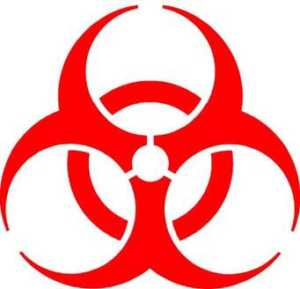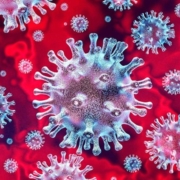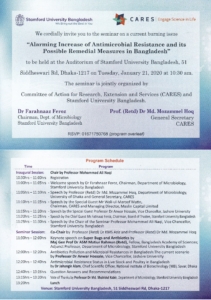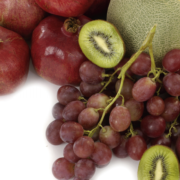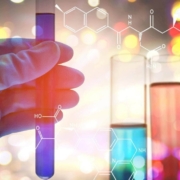Know Covid-19 (Novel Coronavirus) through question and answers and be safe.
Q. What Is COVID-19?
Coronavirus disease 2019, or COVID-19, is a disease that can cause what doctors call a respiratory tract infection. It can affect your upper respiratory tract (sinuses, nose, and throat) or lower respiratory tract (windpipe and lungs).
The COVID-19 outbreak quickly spread around the world. It spreads the same way other coronaviruses do, mainly through person-to-person contact. Infections range from mild to serious.
COVID-19 is one of seven types of coronavirus, including the ones that cause severe diseases like Middle East Respiratory Syndrome (MERS) and Sudden Acute Respiratory Syndrome (SARS). The other coronaviruses cause most of the colds that affect us during the year but aren’t a serious threat for otherwise healthy people.
Q. What Are the Symptoms of COVID-19?
Early symptoms include:
> Fever
> Dry Cough
> Fatigue
The virus can lead to pneumonia, respiratory failure, septic shock, and death. If you notice these severe symptoms in yourself or a loved one, get medical attention right away:
> Trouble breathing or shortness of breath
> Ongoing chest pain or pressure
> New confusion
> Can’t wake up
> Bluish lips or face
If you’re exposed and infected, symptoms can show up in as few as 2 days or as many as 14. It varies from person to person
The most common symptoms and the percentage of people who have them include:
> Fever: 88%
> Dry cough: 68%
> Fatigue: 38%
> Coughing up sputum, or thick phlegm, from the lungs: 33%
> Shortness of breath: 19%
> Bone or joint pain: 15%
> Sore throat: 14%
> Headache: 14%
> Chills: 11%
> Nausea or vomiting: 5%
> Stuffy nose: 5%
> Diarrhea: 4%
> Coughing up blood: 1%
> Swollen eyes: 1%
Q. How Do You Know if It’s COVID-19, a Cold, or the Flu?
When you have symptoms, they can be similar to a bad cold or the flu. Your doctor will suspect COVID-19 if:
> You have a fever and breathing problems and you’ve travelled to places where the virus has spread.
> You’ve been exposed to people who have it within the last 14 days.
Q. Testing for COVID-19
Call your doctor or IEDCR (through hotlines) if you think you’ve been exposed and have symptoms like:
> Fever of 100 F or higher
> Cough
> Trouble breathing
In most states, decisions about who gets tested are made at the IEDCR or your doctor of the hospital you visit.
The test looks for evidence of the virus in your upper respiratory tract. The person giving the test puts a swab up your nose to get a sample from the back of your nose and throat. That sample goes to a lab that looks for viral material or the presence of antibody in the serum against COVID-19.
Q. What Is the Treatment for COVID-19?
There’s no specific treatment for COVID-19. People who get a mild case need the care to ease their symptoms, like rest, fluids, and fever control. You can take medicine for a sore throat, body aches, and fever upon advice by a physician. But don’t give aspirin to children or teens younger than 19. You might have heard that you shouldn’t take ibuprofen to treat COVID-19 symptoms — the
WHO made that statement in March 2020. But they reversed it soon after and said there’s no proof that taking it causes any harm.
Antibiotics won’t help because they treat bacteria, not viruses. If you hear about people with COVID-19 getting antibiotics, it’s for an infection that came along with the disease.
Those with severe symptoms need to be cared for in the hospital.
Numerous clinical trials are underway to explore treatments used for other conditions that could fight COVID-19 and to develop new ones. Several studies are focused on an antiviral medication called remdesivir, which was first created to fight Ebola. A study in China showed that hydroxychloroquine and chloroquine, which are used to treat malaria and autoimmune conditions like rheumatoid arthritis and lupus, helped people with COVID-19 pneumonia.
Q. Is There a Vaccine?
Not yet, but clinical trials are underway in the U.S. and in China to test vaccines for SARS-CoV-2/COVID-19.
One vaccine called mRNA-1273 (which was developed by using messenger RNA) would tell your cells to pump out a protein that will kick-start your immune system to fight the virus. It’s worked well in animals and is ready to test in humans.
Q. What Is Community Spread?
IEDCR, Doctors and health officials use this term when they don’t know the source of the infection. With COVID-19, it usually refers to someone who gets the virus even though they haven’t been out of the country or haven’t been exposed to someone who’s travelled abroad or who has COVID-19.
Q. How Do You Prevent the Spread?
If you’re in an area where it’s spreading, take these steps:
> Wash your hands often with soap and water or clean them with an alcohol-based sanitizer. This kills viruses on your hands.
> Practice social distancing. Because you can have and spread the virus without knowing it, you should stay at home as much as possible. If you do have to go out, stay at least 6 feet away from others.
> Don’t touch your face. Coronaviruses can live on surfaces you touch for several hours. If they get on your hands and you touch your eyes, nose, or mouth, they can get into your body.
> Clean and disinfect. You can clean first with soap and water, but disinfect surfaces you touch often, like tables, doorknobs, light switches, toilets, faucets, and sinks. Use a mix of household bleach and water (1/3 cup bleach per gallon of water, or 4 teaspoons bleach per quart of water) or a household cleaner that’s approved to treat SARS-CoV-
Q. What Caused the New Coronavirus?
Doctors aren’t sure. Coronaviruses can affect different species of animals, in addition to people. MERS and SARS were both linked to animals. Studies show COVID-10 has ties to snakes, bats, and pangolins. Many people who got the disease early on were linked to a large live seafood and animal market in China — you might hear it called a “wet market.” The first cases may have come from animals sold in the market, then spread from person to person.
Q. How Does the New Coronavirus Spread?
SARS-CoV-2, the virus, mainly spreads from person to person.
Most of the time, it spreads when a sick person coughs or sneezes. They can spray droplets as far as 6 feet away. If you breathe them in or swallow them, the virus can get into your body. Some people who have the virus don’t have symptoms, but they can still spread the virus.
You can also get the virus from touching a surface or object the virus is on, then touching your mouth, nose, or possibly your eyes. Most viruses can live for several hours on a surface that they land on. A study shows that the COVID-19 coronavirus can last for several hours on various types of surfaces:
> Copper: 4 hours
> Cardboard up to 24 hours
> Plastic or stainless steel: 2 to 3 days
That’s why it’s important to disinfect surfaces to get rid of the virus.
Q. Is There More Than One Strain of SARS-CoV-2?
It’s normal for a virus to change, or mutate, as it infects people. A Chinese study of 103 COVID-19 cases suggests the virus that causes it has done just that. They found two strains, which they named L and S. The S type is older, but the L type was more common in the early stages of the outbreak. They think one may cause more cases of the disease than the other, but they’re still working on what it all means.
Q. Are Coronaviruses New?
Coronaviruses were first identified in the 1960s, but we don’t know where they come from.
Almost everyone gets a coronavirus infection at least once in their life, most likely as a young child. In our country Bangladesh, throughout the year especially during seasons change, typical flue attack many people but treatment and recording are not maintained. In the United States, regular coronaviruses are more common in the fall and winter, but anyone can come down with a coronavirus infection at any time.
The symptoms of most coronaviruses are similar to any other upper respiratory infection, including a runny nose, coughing, sore throat, and sometimes a fever. In most cases, you won’t know whether you have a coronavirus or a different cold-causing virus, such as rhinovirus. You treat this kind of coronavirus infection the same way you treat a cold.
Q. Have There Been Other Serious Outbreaks?
Yes, coronaviruses have led to two serious outbreaks:
Middle East Respiratory Syndrome (MERS): About 858 people have died from MERS, which first appeared in Saudi Arabia and then in other countries in the Middle East, Africa, Asia, and Europe. In April 2014, the first American was hospitalized for MERS in Indiana, and another case was reported in Florida. Both had just returned from Saudi Arabia. In May 2015, there was an outbreak of MERS in South Korea, which was the largest outbreak outside of the Arabian Peninsula.
Severe acute respiratory syndrome ( SARS ): In 2003, 774 people died from an outbreak. As of 2015, there were no further reports of cases of SARS.
For any query:
General Secretary, CARES
Dr, Md. Mozammel Hoq, Professor (Retired)
Department of Microbiology, University of Dhaka
mhoq@du.ac.bd

